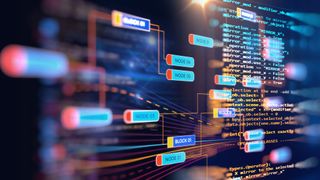Machine learning vs data science: What’s the difference?
Both machine learning and data science are fields that extract insights from data, but the methods vary significantly

Data scientists and machine learning engineers are in hot demand as more companies look to leverage real-time data and uncover insights and trends that they can then use to gain an advantage in their industry.
The terms data science and machine learning may often be used interchangeably by those who aren’t experts in either field, but they are two completely separate disciplines.
To put it simply, data science is all about using various techniques and tools for working with data so it can eventually be turned into actionable insights, while machine learning, a subfield of artificial intelligence (AI), is all about building predictive models – or machines – that can learn from the large volumes of said data.
What are the similarities between machine learning and data science?
While the two disciplines are separate by definition, they share a common goal: extracting knowledge from data.
A data scientist will use statistical modelling, data visualisation and A/B testing to achieve this, while a machine learning engineer will rely on developing and applying algorithms that don’t require explicit instructions or human intervention to make predictions.
There is a substantial overlap between data science and machine learning, with many data science projects involving machine learning algorithms. However, despite the similarities and overlaps between these two fields, each has distinct characteristics and uses.
What are the differences between machine learning and data science?
Data science brings structure to data, while machine learning learns from the data. In order for this to be achieved, data science involves data cleaning, a process whereby errors, inconsistencies, and missing values are identified and corrected.
Get the ITPro. daily newsletter
Receive our latest news, industry updates, featured resources and more. Sign up today to receive our FREE report on AI cyber crime & security - newly updated for 2024.
As well as domain knowledge, programming, statistics, some data scientists may also make use of machine learning in their job, though data science can exist without machine learning. On the other hand, machine learning relies on data science to ensure that the data the models are being trained on is reliable.
Which skills are required for data science and machine learning?

Discover the benefits that a server refresh can have on your organization
DOWNLOAD NOW
Data science requires a wide range of skills, including domain knowledge, programming, statistics, and data visualisation.
A career in machine learning requires experience in computer science and mathematics. In particular, skills such as linear algebra, calculus, and probability theory are handy to be able to implement the algorithms machines will need to make predictions.
Both disciplines can come in use in a wide range of roles across various industries, including AI engineer, business intelligence analyst, data analyst and research scientist.
How are machine learning and data science used across different industries?
In technology, data science and machine learning are used by engineers to build intelligent systems and improve user experience (UX). For example, Google uses machine learning to improve its search results, and Amazon uses it to personalise product recommendations.
Financial institutions, on the other hand, would use data science and machine learning to detect fraudulent transactions, predict stock prices, and identify potential investment opportunities.
It’s wildly different from how these technologies would be used in healthcare, with both data science and machine learning employed to medical data, improve patient outcomes, and provide personalised healthcare. For example, machine learning algorithms can be used to identify patterns in medical images and make accurate diagnoses.
Similarly, in retail, companies analyse customer data and make personalised product recommendations, while also working to optimise the supply chain and logistics. In transport, meanwhile, machine learning is used to optimise traffic flow, prejudice maintenance and demand for a specific route.
Finally, data science and machine learning are widely used in research fields such as physics, genomics, biology and environmental science to analyse and understand complex data sets.
What are some of the most common applications of data science?
There’s an array of use cases for strong data science skills across various organisations. Among these include the following.
1. Predictive maintenance in manufacturer
Data collated from sensors on a factory floor can be used to predict when a piece of machinery might break down and allow engineers to carry out maintenance before a fault occurs.
2. Fraud detection
By analysing transaction data, data scientists can build models to identify unusual behavior that may indicate fraudulent activity and help with fraud detection and prevention.
3. Market segmentation
By analysing customer data, data scientists can segment a market and identify customer groups with similar characteristics, allowing businesses to target their marketing efforts effectively.
4. Sentiment analysis
Analysing text data by carrying out text mining can help a data scientist understand customers' perceptions of a particular product, service, and brand and help businesses to make decisions accordingly.
What are the most common applications of machine learning?
Similarly, machine learning is used across the entire economy, with varying sizes and types of organisations able to access machine learning services to achieve several business aims.
1. Image and speech recognition
Machine learning algorithms can be used to analyse images and audio data and recognise objects, people, and speech.
2. Recommendation systems
Machine learning algorithms can be used to analyse user data and make personalised recommendations for products or content.
3. Natural language processing (NLP)
Machine learning models can be used for tasks like language translation, text summarisation, sentiment analysis, and much more.
4. Self-driving cars
Machine learning algorithms can be used to train cars to drive autonomously by analysing sensor data and making decisions about how to navigate the road.





